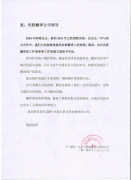世联翻译公司完成日历传播风险话题英文翻译
时间:2018-01-24 08:57 来源:未知 作者:dl 点击:次
世联翻译公司完成日历传播风险话题英文翻译
Calendar Spread Risk

INTRODUCTION
To hold a calendar spread is to hold one option position in one month and at the same time a second option position in another month. A calendar spread is also known as a horizontal or time spread. The universe of two-legged time spread positions is 400 (20 X 20), since each possible single-month position (of which there are approximately 20) may be spread theoretically with any other position in a time spread. Adding a third month (leg) to the spread would create a time butterfly, with a theoretical universe of 8000 possible variants. Since only a small fraction of these possible time spreads have been considered in options studies, there is likely much to be learned about time spread risk.
Many traders assert that initiating a time spread is one way to reduce or neutralize the delta and kappa/vega risks in any singlemonth position. Maybe. The most commonly recommended time spread strategy is to short kappa/vega in one month against long kappa/vega in another month, usually with the front-month short and the back-month long in what may be called a short kappa hega time strategy.
The simplest short time position is a one-to-one ratio at the same strike or strike futures basis. But other variations are possible such as diagonal spreads, in which the strikes are not the same, or other more complex combinations. In all of theso strategies, however, the deltn and short kappa/vega risks of one month option are offset by the delta and long kappa/vega of another month option. All these calendar positions will here be termed short kappa/vega time strategies, whether the short time leg is the front or back-month.
In financial markets especially, where asset time spreads are driven by the cost of carry, short option time spreads are an important component of any large option portfolio. The short kappa/vega time option strategies resemble the long front/short back-month futures strategy, which seeks to capture a positive cost of carry in this time position. The silver futures time spread market has long been used to capture this positive cost of carry (or interest), and the strategy dates back to the nineteenth-century metals markets (Wolff, 1987).
If one takes the total combined net delta and the total net kappa/vega of the two-legged time position, the risk may approximate zero according to the definition of single-month position risk. Indeed, it even may be possible to be both positive theta and positive kappa/vega in a total time position, which it is impossible to do in a single-month position. This reduction or improvement of delta and kappa/vega risk through calendarization conforms to the popular impression that time spread trading is a limited-risk strategy if single-month theta and positive kappa/vega are the appropriate measures of risk.
Despite its supposed advantage or necessity, time spreading may be more risky than perceived. Market makers who use time spreading as a risk reduction strategy may be deceiving themselves, for any time spread reduction in the delta and kappa/vega risks may come at the cost of increasing potential exposure to other time-based risks, which may be as large as or larger than the risks just reduced.
Time spreading exposes traders to the new risks of time delta and time kappa/vega, as defined below. It is time-based delta risk and time-based kappa/vega risk that determine the riskiness of option time spreads, not delta and kappa/vega risk as defined for single-month positions.
As with single-month risk, time risks may be considered limited or unlimited. Generally, the short kappa/vega time strategies are exposed to unlimited or catastrophic risk, but other time strategies that effectively limit time risk are possible. Only after the reader has grasped the concept of time risk and its limits, discussed in this chapter, should he or she move on to Chapter 7 and its formulation of option market-making strategies as a whole.
TIME DELTA (△) RISK
Time delta is simply the risk to a futures option time spread due to a change in the futures price time spread basis. Only futures options time spreads are subject to time delta risk.
Time △
Dollar change in option time spread value
Dollar change in futures price time spread
For example, assume that a trader is short the 100 May call at $1.70 with a 15 implied volatility level with 30 days to expiration, and long the 100 June call at $2.39 at the same implied level with 60 days to expiration, with both the May and June futures at 100. If the May future goes to 101 while the June future stays at 100 (all else being equal), the May call will go from $1.70 to $2.25, a change of +$0.55. This $0.55 will represent a loss to the short May call/long June call time spread and is the time delta risk. The payoff profile and futures basis risk delta are shown in Figure 6.1.
The short front-month/long back-month call spread is negative time delta for all futures basis moves between futures prices 90 and 110. That is, the position will always lose money if the futures spread between the front and back goes backward. The time futures basis delta of a position has no mode and resembles the delta of a short call. It is not the same, however, as the total position delta, which is bimodal (put side positive, call side negative) and resembles the delta of a long butterfly single-month position. But it is precisely because total position delta gives a reassuring risk perspective that time futures basis delta grows in importance.
Only futures options are subject to time delta risk because generally only futures have a time basis spread in the underlying asset. Stock or cash financial calendar options are exercisable against the same fixed asset, whereas futures options by month are exercisable only against the future of the corresponding month. A futures basis price spread becomes a direct risk to any time spread futures option strategy. Since there is virtually no theoretical limit to the basis of futures monthly spreadH, except perhaps the worthlessness of the future contract itself, time delta risk may pose a potential for catastrophic loss to a futures option position that is improperly hedged.
Futures
Figure 6.1 Time risks for a short front-month/long back- month case. Expiration refers to front-month option.
While time delta risk poses a serious risk to calendar option positions, it may reasonably be offset or hedged by executing a futures time spread to neutralize the delta of the option time spread for each month separately. For a short front/long back call spread, for example, a trader would go long front-month futures and short back-month futures so as to execute a standard hedge against commodity inventory, albeit an inventory of options. This action will partially protect the total option position from futures price basis.
When the net delta spread of the option position is reversed in an offsetting equivalent delta spread in the futures market, time delta risk is reduced considerably, and futures spreading is always recommended for prudently hedged futures options time spreads. To the extent that option time spreads are delta-neutral for each month separately, time delta risk may be limited.
Unfortunately, using futures markets to hedge time delta risk to option spreads properly will cost market makers extra money and lower the profitability of the original option spread. Although avoiding the futures spread to protect the option time spread will save money in the short run, it will only expose the trader to very large losses in the long run and is a mistake in strategy. For nonfutures option time spreads, of course, neither futures basis nor time delta risk exists. Woe be it to the stock option trader, however, who trades futures options in the same way as stock options.
TIME KAPPA/VEGA (K) RISK
Both futures and cash options calendar spreads are also subject to risk of change in the level of implied volatility in each leg of the spread, regardless of futures price spread change. This risk may be defined as:
Time K (or Vega)
Dollar change in option time sprend
One-point increase in time implied volatility spread
Reconsider the option strategy of a short front-month call and long back-month call of the same strike with the calendar futures price basis at zero. Front- and back-month options do not necessarily trade at similar implied volatilities. The market may estimate that the future volatility is higher or lower in the near term than the longer term. If the market’s estimates of implied volatility for the front-month call should rise while the back-month implied volatility estimate should fall, it is possible for the trader who is short front-month options and long back-month options to suffer losses in this market situation.
The time kappa/vega risk for the short front-month/long back- month call spread from the previous section is shown in Figure 6.1. Time kappa/vega is unimodally negative, larger in the back- month spreads and growing smaller in the front-month spreads. At its maximum, time kappa/vega risk is about 16 cents per spread but even 30 days later it remains above 10 cents.
While 16 cents may not seem like a large risk, remember that in many futures options markets this 16 cents may represent $80 (0.16 X $500) in real dollar terms if one whole futures point = $500. Even though $80 may seem relatively small for one time spread, many option spreads are margined only in the hundreds of dollars, and $80 may be a significant percentage of that margin. Time kappa/vega is a serious option risk and is quite different from the kappa/vega risk of the total position, which indeed may be somewhat neutral. The time kappa/vega risks of the short front/ long back spread resemble those of the kappa/vega of the short put, short call, and short straddle, which we have seen are unlimited-risk positions.
In option calendar markets, nearer options are generally priced with higher implied levels than back-month options. This feature may be called the normal backwardation of implied levels, although the degree of backwardation may vary considerably (Figure 6.2). In futures option markets, the higher implied volatility for front-month options is partially justified by the generally greater actual volatility in front- over back-month futures.
Nevertheless, the near-month implied level occasionally may fall lower than the back-month level in an implied volatility contango. Near-month implied levels in particular may fall lower than back-month levels as expiration nears, as heavy short premium selling by the public taken place, or as long seasonal holidays approach when light trading is expected.
Front
Middle
Back
Option month
Figure 6.2 Implied volatility contango and backwardation of futures options.
Although time futures basis delta risk is not a serious or unlimited risk when properly hedged, the same is not necessarily true of time kappa/vega risk. The extent of backwardation in option implied volatilities cannot be fixed in advance and is theoretically unlimited (Figure 6.2). Futures options normally trade with implied volatility time spreads of only one or two points but may sometimes go out to 10 or more points, as happened in recent disorders in the stock and bond markets in 1987 and 1989.
Even if one assumes that an upward boundary of 10 or 20 points exists in the backwardation or contango of implied levels, a position with 1000 time spread contracts that experiences a kappa/vega risk of 16 cents per spread (or $80 in real dollars) will suffer an $800,000 loss in a 10-point move in implied backwardation levels. A 10- or 20-point adverse move in the time implied volatility spreads may quickly send an option trader to the bottom of the sea if he or she is not careful. Although this may not happen often, it need only happen once to end an option business.
Time strategies differ significantly in their time kappa/vega risk. Some carry large negative time kappa/vega risk, and others do not. As we noted, the short front-month/long back-month option time strategy carries negative time kappa/vega risk. Theoretically, there are 400 distinctly different two-legged time spread strategies (20 single-month positions squared). It is beyond the scope of this text to present a classification of the limits of time kappa/vega for all these strategies. Nevertheless, for those strategies that carry large time kappa/vega risk, there is no expedient way to use futures to offset this risk, as is done to hedge time delta risk. Time kappa/vega risk is inherent in any option time spread and can only be hedged, if at all, by other option time spreads.
LIMITED AND UNLIMITED TIME RISK
The characterization of time spread positions as having limited or unlimited risk must be based on time delta and time kappa/vega risk evaluation, not single-month delta or kappa/vega risk. Unlike the bull or bear vertical spreads of a single month, which have a finite basis of gain/loss, many option time spreads do not have a basis limit to the losses sustainable in the event of the unexpected futures spread price or implied volatility change. Thus, the two-legged time spread is potentially an unlimited risk strategy if proper care is not taken.
As we have already discussed, futures options traders may successfully manage futures basis risk by hedging delta in each month with an offsetting futures delta position in that month. That is, the time option spread is crossed with a time futures spread, thus making each month delta neutral separately. While this procedure works tolerably well as a short-term hedge against time delta risk, it leaves unaffected time kappa/vega risk, which may remain potentially catastrophic.
Nothing says the short (front) month implieds must trade at parity for the long (back) month implieds as noted in the previous section. In the extreme case, front-month implieds may trade at two to three times the back-month implieds, representing an implied backwardation. In this case, a short front-month/long back-month position could suffer losses as great as if it had not been long back- month kappa/vega at all.
Assume, for example, that at a time when the front and back months are each trading at a 15 implied volatility level a trader shorts the front and buys the back for kappa/vega risk parity. Subsequently, the front-month implied rises to 30 while the back month rises only to 20. The loss of 15 implied volatility points in the front month is only compensated by a profit of 5 implied volatility points in the hack month, for a net loss of 10 kappn/vegn points.
The potential for a loss of 10 kappa/vega points is a serious financial risk. Furthermore, the risk is potentially unlimited, for the ratio of the short-month implied to the back-month implied may increase without limit. If the front-month implied moves from 15 to 60 and the back-month implied moves from 15 to only 25, then the spread will have moved 35 kappa/vega points against the trader—clearly a catastrophic loss.
It may be possible to compensate for this unlimited time kappa/vega risk on one leg by going long a greater kappa/vega in the back month relative to the short kappa/vega risk of the front month. Based on the kappa/vega spread possibilities of the preceding two paragraphs, a trader wishing to hold a short front-month/long back-month position should consider holding a short-to-long kappa/vega ratio of at least 1:3 to feel safe from an implied volatility blowout in the front month. A trader holding this position could see front implied levels go from 15 to 45, while back levels go only from 15 to 25 and would still not lose money.
While heavy weighting of back-month to front-month kappa/ vega will protect the trader to some extent from an implied volatility blowout, it also leaves the trader heavily long kappa/vega overall. Should implied volatility levels decrease at the same absolute level for both front and back months, the short front/long back strategy, back-weighted, will suffer a severe loss.
In other words, by attempting to hedge against the possi¬bility of an implied front-month blowout, a trader is exposed to a large single-month kappa/vega risk in the back month. Neither the parity kappa/vega two-legged strategy nor the back- weighted kappa/vega strategy is able to avoid severe and unlimited kappa/vega risk. Generally, therefore, the short front-month/long back-month horizontal time spread strategy is not strongly rec-ommended.
A short front-month against a long back-month time spread will not be protected from a blowout in the short month implied ratios against the long month. Since this horizontal or diagonal time spread is often recommended as a safe strategy, a conservative trader will want to know that this statement is not necessarily so. A blowout in time implied volatility spreads could be (and has been) the downfall of many option traders. For this reason, the two-legged time spread strategy is not recommended where either leu is short kappa/vega as a single-month position.
However, not all two-legged time spreads are catastrophically rink-exposed- only those with short time kappa/vega rlsk. The only way to ensure that a time spread is hedged with respect to time kappa/vega risk is to hold limited kappa/vega risk positions for each time leg separately, as with time delta risk. For a time spread to be adequately hedged against time kappa/vega risk, each leg of the time spread must be a limited-risk option position. To be long two straddles, one in a front month and and one in a back month, is a limited time kappa/vega risk position, but a long/short time straddle position is not.
To determine whether a particular total carryover position is subject to unlimited time spread risk it is necessary to perform risk analysis on each calendar month position separately. In a two- or three-legged horizontal spread, if any single leg of the position is exposed to unlimited delta or kappa/vega risk, then the total position is probably so exposed, whether the kappa/vega offsets are parity or weighted in other months.
Hedging for time kappa/vega risk will considerably reduce the number of time spread strategies that a prudent trader will use. While there are 400 possible two-legged time spreads, there are fewer than 100 that have limited-risk exposure. These positions will be reconsidered in Chapter 7.
TIME BUTTERFLIES
Time spreading to a third leg may alter two-legged time delta and kappa/vega risks considerably. Time delta risk would initially increase owing to the exposure to a second futures time spread; but this change could be managed by doing offsetting futures hedges at the same time as in the two-legged time futures hedge. The nature of the time kappa/vega risk in a three-legged option strategy is more complex, however, and less frequently studied.
In a three-legged time spread probably the safest way to avoid the unlimited risk of the short two-legged time spread strategy is to bracket a short middle-month position with a long front- and back-month position. The latter strategy can neutralize the unlimited risk of the two-legged strategy if certain assumptions are fulfilled. If implied volatility time spreads trade in a semilinear or smoothly curved backwardation or contango, then this two-long, one-short month Hlrategy may work successfully to limit risk, since the mean of the front and back implied levels may be set to equal the middle month level whether the implied time spread mows in contango or backwardation.
Unlike a two-legged short time spread, a three-legged long time spread may limit catastrophic time kappa/vega risk under cer¬tain market conditions or assumptions. However, traders should be aware that these conditions (semilinear implied contango or backwardation) cannot be assured. If the implied volatility spreads between the front, middle and back diverge from semilinearity in a significant way, the long kappa/vega three-legged strategy may become exposed to severe or potentially unlimited risk.
Such a split in implied contango/backwardation across cycles would be unusual but not impossible. There is no empirical or logi¬cal necessity that the implied levels of the middle month’s position will approximate the mean of the front- and back-month position implied levels.
For example, consider the situation of a front old-crop month, back new-crop month, and a middle transition month characteristic of many seasonal agricultural options. Even when there is normal implied backwardation in the intracrop months, the intercrop spreads diverge according to fundamental considerations for kappa/vega that depend upon crop supply-and-demand seasonality. For seasonal crop options, it would be possible for the implied volatility spread to be in backwardation for the old-crop cycle, but in contango for the transition and new-crop months.
In short, trying to neutralize time implied volatility risk with different crop year options is a poor hedge. Should all months move against the long time kappa/vega butterfly trader simultaneously, the trader may suffer severe and possibly unlimited losses. Although nonseasonal commodities and financial option markets are not usually subject to violations of the assumption of the semilinearity of implied time spread, this also need not be the case. In the U.S. Treasury bond market, for example, refunding schedules may act to impose a seasonality in supply and demand not unlike seasonal commodities. These could act to produce irregular implied volatility time spreads.
Another disadvantage of a time butterfly strategy is that, as the front-month expires and the middle month becomes the front- month, the trader will be left with a short front-month/long back- month kappa/vega position, which we have already seen is a poor risk strategy. Since time butterflies turn into two-legged short time spreads over time, the long kappa/vega time butterfly strategy would require repetitive rollovers of position after each expiration, a time-consuming, expensive, and sometimes difficult task to do in all markets, given the irregular (low of broker orders,
Nevertheless, if the rollover of time butterflies can be accomplished successfully (and without compromising intercrop seasonality), these strategies may be prudent. Moreover, it is possible to use time butterfly strategies if the same principle is followed for prudently trading two-legged time spreads—that is, hold each leg of the spread as a limited-risk position separately. If kappa/vega risk is independently spread by month, then time kappa/vega risk is effectively neutralized. Several different multileg time strategies that have less risk than the short time strategies will be considered further when discussing optimum strategies for market makers in Chapter 7.
|























